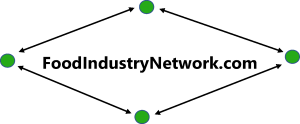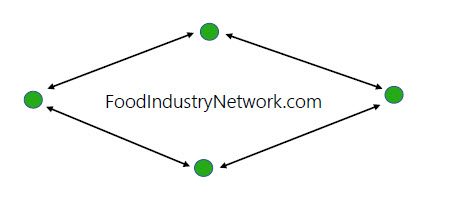Coal fuels potential clean animal feed

A partnership between an Alberta university and a clean energy and biotech company hopes that old technology will help them create a new-to-Canada livestock feed that will be a win both for farmers and the environment.
The project from the University of Alberta and Calgary-based company Cvictus uses methanol extracted from underground coal seams to create nutrient-rich, lower-cost animal feed at scale. On an environmental side, they suggest the product will involve less carbon dioxide production and need less land to produce.
Feeding animals more sustainably has become a major push within the livestock sector as the industry continues to try and strengthen the case for their sustainability.
Read Also


Fertilizer needs fair trade balance: Canadian Association of Agri-Retailers on tariffs
Tariffs between Canada and the U.S. threaten farmers on both sides of the trade war, CAAR says, but the real hits may not be felt until next year.
In addition to federal and provincial investment, the project has caught the ears — and cash — of the Bill and Melinda Gates Foundation. The group is donating US$1.7 million towards specific parts of the process, said U of A agriculture professor David Bressler.
The process behind the feed mostly happens in a lab, he noted, potentially opening up land currently used for feed production to other uses, as well as dodging the weather volatility of conventional forage and feed.
“For the livestock producers themselves, you’re going to have a very stable feed that has a very stable price point that has really no crises impacting supply,” said Bressler. “So it doesn’t matter if we have a year with a lot of hail or flooding.
“The feed industry goes up and down depending on what’s happening with the production of the year. This looks a lot more like the market dynamics of a regular chemical industry.”
Katrina Stewart, director of biotechnology and carbon reduction for Cvictus, said the resulting feed — which will be in powder form — is intended for beef and dairy cattle, pigs, chickens and aquaculture.
Fossil fuel for feed production
The same kind of SCP feed was previously sold in Europe under the name Pruteen by Imperial Chemical Industries in the 1970s and 1980s, said Stewart. That product hit a market wall when natural gas prices went up and, with them, the price of methanol.
Cvictus owns patented technology for extracting hydrogen and carbon from underground coal seams. Enhanced hydrogen recovery (EHR) is the first step in the process, at least on the company side.
“What we do is we access ultra-deep coal seams that have no other use. These are unmineable coal seams (that are) prolific all over the world and all over Alberta,” said Stewart.
The company uses horizontal well pairs to drill into the coal seam 1,500 metres underground. The coal is then “gasified” and converted into methanol or hydrogen for further projects.
“Any of the CO2 that comes to the surface with those beneficial gases we’re able to capture, (we) inject it right back into the same seam where it comes from. So it is kind of a closed loop from a carbon perspective,” said Stewart.
The next step happens at the university.
Methanol becomes a key component for the production of single-cell protein, matter from micro-organisms that, when processed, can be used as a feed protein supplement. Bacteria is grown on the methanol in a supercharged fermenter (a kind of reactor).
“As the bacteria grows, we add more methanol and more media, which is salt and other smaller components that the cell needs to survive,” Stewart said. “We add that continuously to the fermenter along with a continuous stream of methanol.”
After a couple of stages of this, the full bacteria is denatured and dried. What remains is isolated SCP, ready to be added to feed.
Bressler’s biorefining conversions and fermentation laboratory at the university, which — with its 1,000 litres of processing capacity — can scale up production, is one of the main reasons behind the public-private partnership.
“All the work we’ve been doing is on bench scale fermenters — two- to five-litre reactors that work in a lab — and we’re going to move that up to 1,000 litres of processing capacity,” Stewart said.
Bressler breaks the research participants into three groups: the Cvictus team, his lab team and another dedicated to testing the product on animals.
“What’s interesting about this project is that the team is working at a pretty good scale, even for a laboratory running these big fermenters as a unit. And it’s 24/7 operations when they’re running so there’s a bit of shift work in some ways,” he said.
Testing the feed
The group responsible for seeing how the feed product might work in actual livestock production is led by Ruurd Zijlstra of the U of A’s Faculty of Agricultural, Life and Environmental Science. The team is doing analytical and digestibility studies to model how the feed breaks down in animal systems.


From there, he will seek regulatory approval for large-scale feed and animal trials. Upon approval, he will start blending the SCP powder into pig and poultry feed.
The technology will eventually be used at Cvictus’ first commercial facility, to be built near Red Deer, Alta. That facility will contain all the company’s projects under one roof.
“This is an approved facility for (producing) seven tonnes a day of clean hydrogen and we’re in the works of building and commissioning that right now,” Stewart said. “So the timeline for our first hydrogen will be 2026 … We’ll look to scale that up to a larger hydrogen production and then to a methanol production, and then we would add the single-cell protein onto that site.”
Support from big technology
The Gates Foundation became interested in this project while seeking ways to provide protein for Africa, India and other countries around the globe. The foundation funds are going towards the scale-up and feed testing components of the project.
“Protein for feed is very limited right now,” Bressler noted. “Even for food in some markets, protein is just prohibitive. And so if you can get to methanol, you can get to protein with this pathway.
“And so if they find ways of gasifying biomass or municipal waste, which is the same process as we’re doing to the coal, they can make methanol and make protein at very large scale.”
Stewart is also excited about the donation.
“It’s really nice to have that name recognition and see somebody have interest in the potential of this, not just from an Alberta perspective but from a global perspective,” she said.
The research is also being sponsored by national and regional research funding bodies like MITACS, the Natural Sciences and Engineering Research Council and Alberta Innovates.
Source: producer.com


